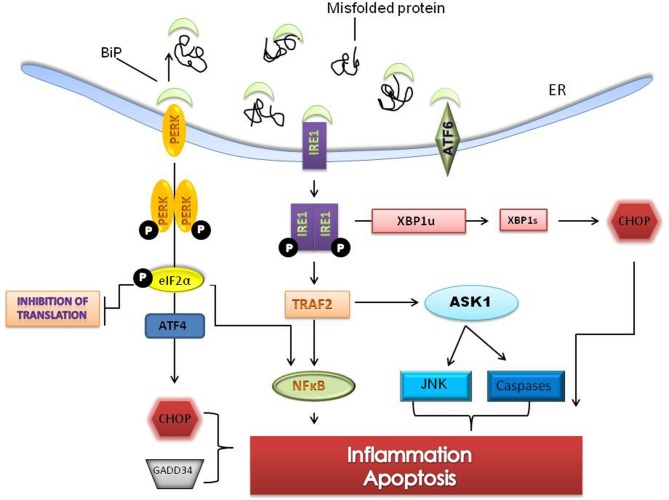Figure 2.
Sustained ER stress leads to pro-apoptotic signaling and cell death. Unresolved ER stress leads to inflammation and cell death pathways involving the PERK and IRE1 branches of the UPR. The IRE1-TRAF2- apoptosis signaling kinase 1 (ASK1) complex upregulates c-jun NH2 terminal kinase (JNK) and caspases and through splicing of XBP1 can activate C/EBP homologous protein (CHOP), a pro-apoptotic transcription factor. PERK signaling, through phosphorylation of eIF2α, can activate ATF4 dependent transcription resulting in activation of nuclear factor-kappaB (NFκB) and increases in CHOP. CHOP and ER specific caspases are thought to directly induce cell death. Several genes that mediate apoptotic function and inflammation are induced by prolonged ER stress.

